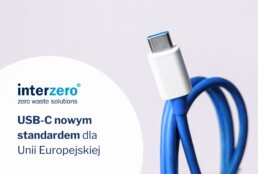
Why will a universal USB-C charger be the standard for all devices?
The USB-C universal charger will be standard for all by the end of 2024. Why? This is a top-down order from the European Union, which is primarily aimed at directing consumers towards greener purchasing choices.
Under EU rules, all phones, tablets and cameras sold in the EU will have to have a USB Type-C port by the end of 2024, and from spring 2026 the requirement will also be extended to laptops.
From this article you will learn:
- what type of chargers dominate the market and why EU demands for devices with a charging port have arisen;
- which mobile devices will be affected and when the new rules will come into force;
- what direction the European Parliament is going in with regard to waste and ecology in general.
Universal charger for all devices
Among the regulated devices were mobile phones, tablets, games consoles, electronic readers and others portable equipment. All those devices that charge by wire and that operate at up to 100 watts will have to be equipped with a USB Type C port - regardless of the manufacturer. This is a landmark decision that aims both to simplify the lives of consumers and to reduce the negative impact of electrical and electronic waste on the environment. The European Commission and the European Parliament have unanimously recognised that this solution will have a positive impact on the ecosphere and allow for a minimal reduction in consumerism.
Customers are to choose for themselves whether to purchase a new device with or without a charger. This should reduce the accumulation of electro-waste in homes and thus the dumping of electro-waste in inappropriate bins. The EU estimates that broken and unused chargers account for around 11,000 tonnes of waste. This is an intimidating amount - but the next question begs to be asked - what about chargers with other terminals when the EU's USB-C recommendations come into force?
Are all producers ready for change?
Research by the European Commission shows that half of all chargers sold in 2018 in the community countries used a USB micro-B connector. Only 29% had a USB-C type connector and 21% had a Lightning connector, used by Apple since 2012. Unifying chargers to one standard will result in many patented charging ports (such as Lightning from Apple) going out of use in Europe. Manufacturers are therefore making the argument that once chargers are standardised to USB-C, all other chargers that are already in consumers' homes will go in the bin. Researchers in an issue of the Northwestern Journal of International Law & Business examined the issue. In fact, as of 2019, only 29% phones sold in the European Union used USB-C chargers. Therefore, forcing a switch to USB-C would render nearly 71% chargers useless to consumers. Customers who buy newer devices with a USB-C port would no longer be able to reuse their older chargers with a different input.
Customer education - in line with new regulations. What changes will come in with the standardisation of device chargers?
However, if we look at the issue in a broader, long-term perspective, European citizens could save up to €250 million a year by standardising the charging standard, according to European Commission analyses. In addition to the economic benefits, the new regulations aim to reduce the quantities of waste electronics, which is an important step towards sustainability. Guidelines on charging requirements for products are to appear on device labels. Perhaps in a few years' time we will only need one charger for all the equipment in the home or office?
Click yet here! You can see how paper recycling is growing in Europe!♻️